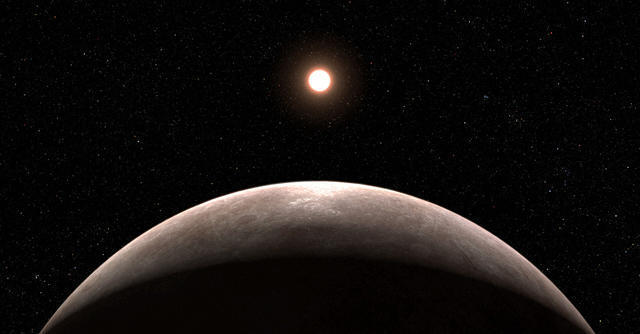
James Webb Space Telescope finds its first exoplanet, the Earth-like LHS 475 b


The James Webb Space Telescope (JWST), which was launched in December 2021 after nearly three decades of development, has successfully spotted the first exoplanet of its career. In a joint statement published by the central space agencies of the US, Europe and Canada on January 11, JWST is announced to have discovered LHS 475 b, an exoplanet that is reportedly almost the exact size of Earth, and with a rocky topography — thus making it even more interesting to study.
As of now, the atmospheric composition of the planet is yet to be studied. However, LHS 475 b, which is about 41 light years away from Earth, orbits a red dwarf star very close, completing a full revolution around it in two days. As a result, its surface is said to be “a few hundred degrees” warmer than that of Earth’s — thus not being in the conventional ‘Goldilocks zone’ (or habitable zone) that is believed to be an identifier for potential life-supporting planets.
The Goldilocks zone is a range of distance from a star, where planets experience temperature and other natural forces that could allow water, in the form we know it, to remain liquid — thus potentially supporting life. The National Aeronautics and Space Administration (Nasa), the central space agency of the US, spends billions of dollars every year in exoplanet research.

The discovery was made by scientists Kevin Stevenson and Jacob Lustig-Yaeger of Johns Hopkins University’s Applied Physics Laboratory, who first found trace of the existence of the planet through Nasa’s Transiting Exoplanet Survey Satellite (Tess). Following this, the researchers used data from JWST’s Near-Infrared Spectrograph (NIRspec), which offered clear readings in just two transits of the planet’s area — thus identifying the existence of the rocky world.
Mark Clampin, director of astrophysics at Nasa, said that the discovered “opens the door to many future possibilities for studying rocky planet atmospheres with Webb.”
“Webb is bringing us closer and closer to a new understanding of Earth-like worlds outside the Solar System, and the mission is only just getting started,” he added.

To be sure, JWST is presently billed as the only satellite that can offer clear readings of an exoplanet’s atmosphere. However, while studies are ongoing, the researchers are not clear yet on whether LHS 475 b has a satellite, or not. Lustig-Yaeger noted in a statement from ESA that the planet is certainly incapable of hosting a thick, methane-based atmosphere, although a pure carbon dioxide-based atmosphere has not been ruled out yet.
